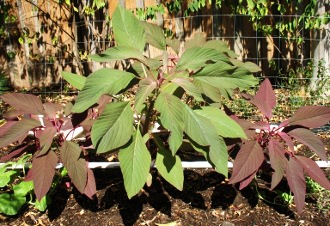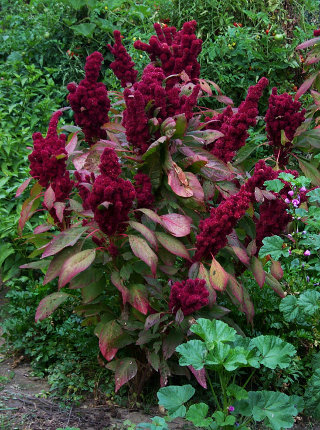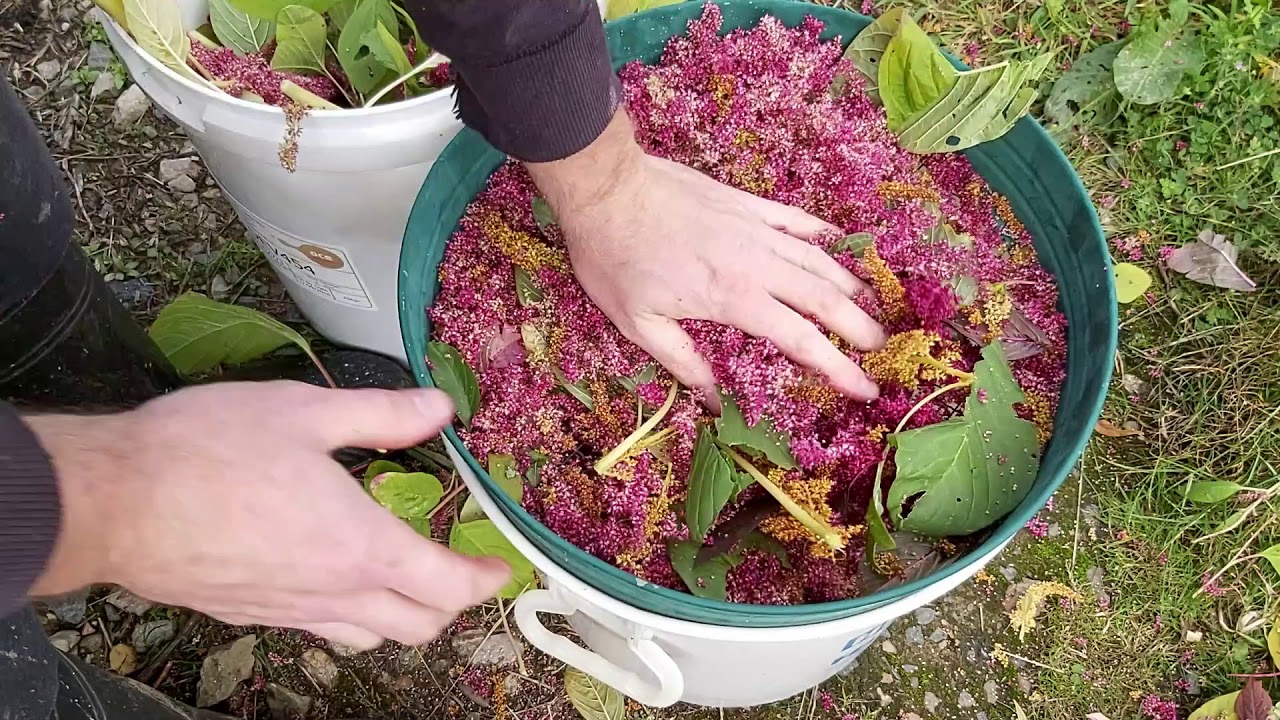Here is some information for you about your Summer produce. This page covers descriptions of the plants, harvesting your produce, and even some recipes!
Amaranth
About the Plant
Amaranth is an old crop. It was a staple for the Incas and the Mayans. It has been used as a food source for over 6000 years. Its genus is Amaranthus. Three species are grown for food: Amaranthus cruentus, Amaranthus caudatus, and Amaranthus hypochondriacus. We have been growing Amaranth caudatus with the common names Hartman’s Giant, Vietnamese Red, Kerala Red, Love-Lies-Bleeding, and Mexico City Red.

Amaranth can grow very large, as tall as 10 feet. Its broad leaves vary from burgundy to olive green. The stalks are typically burgundy regardless of leaf color. It grows magenta flower heads that look like large feathery plumes. Learn more how to get vegetable seeds for free!
The plants are easy to grow. The seeds are incredibly tiny, so they’re a little difficult to manage, but once they’re in the ground, they start growing quickly, with germination occurring within 10 days. Surface sow the seeds when temperatures are warm. You should see small seedlings within 15 to 20 days.
Growing Conditions
Plant amaranth seeds 2 feet apart. The full grown plants can be anywhere from 2 to 10 feet tall, depending on the type, with leaf crowns of 1 to 2 feet wide. Plant them in soil amended with compost that has good drainage. Amaranth doesn’t like soggy soil. It loves high heat and full sun. Amaranth is also very tolerant of dry conditions but water it regularly for full growth. South Texas has brutal summers, and very few plants grow in the garden during the summer. Amaranth is one of those few plants. It performed better than our okra, winter squash, and Asian melons, which are our other summer crops of choice. We had no problems with bugs, pests, or diseases, which is typical for amaranth. It’s a very easy crop to grow.

In 30 to 40 days, you can begin harvesting leaves to eat. Just trim a few leaves off each plant at a time. After 50 to 60 days, you will see seed development. The seeds are a grain, so you can also eat those.
Eating Amaranth
Amaranth grain and leaves are eaten all over the world. They are very popular in South America, China, and India. The grain contains a complete protein. Amaranth contains vitamins A, E, K, B6, C, riboflavin, and folate. You also get the minerals calcium, iron, magnesium, phosphorus, potassium, zinc, copper, and maganese. The amount of fiber in amaranth grain is three times higher than wheat. Finally, amaranth oil from the grain is predominantly unsaturated, and it is quite high in linoleic acid.
The taste of amaranth leaves is very similar to spinach. Bitterness becomes a problem when the leaves are cooked too long. Stir frying the leaves is a great option for preparing the leaves. You can harvest the leaves throughout the season. Simply snip a few leaves from each plant, leaving enough for the plant to continue to grow.

You can cook the amaranth grain like other cereal grains. Boil 1 cup of the grain with 2 1/2 cups of water and a pinch of salt. Cook it for 18 to 20 minutes. Add it to soup instead of rice or barley. You can also grind it into flour. It doesn’t contain gluten, so if you’re on a gluten free diet, it can be a great part of your diet. If you aren’t gluten free and want to use it in baked goods, mix it with other flour.
Saving the Seeds
You can gather thousands of seeds from the Amaranth plants, up to 50,000! Cut off the seed pods and hang them upside down indoors. Collect the seeds on a tarp as they fall. You can also place them in a large paper bag to catch the seeds. Remove any chaff from the seeds before cooking or storing them. Place them in a container and store them in a cool, dry place. They keep longer in the refrigerator, up to 6 months, just make sure they are in a sealed container, so they don’t pick up moisture from the refrigerator. You can also save the seeds to plant next year. If you have any extra seeds, mail them to The Dinner Garden!
Eating Amaranth
Stir fry a large handful of amaranth leaves with 1 tsp of fresh, chopped garlic. Cook it just until the leaves wilt.
Cook one cup of grain in 2 1/2 cups of chicken broth for 18 to 20 minutes. Let is rest for 5 minutes. Fluff the amaranth grain. Toss in 1 tablespoon of fresh, chopped Thai basil and 1 teaspoon of fresh minced ginger.

